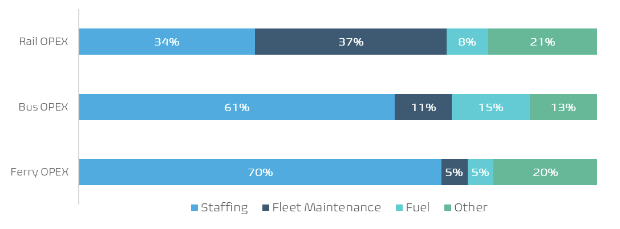UK railways will be undergoing the largest transformation in a generation following the launch of the ‘Williams-Shapps Plan for Rail’ last month – this offers an important opportunity to structure and incentivise the industry to embrace digitalisation and technological innovation and revolutionise our railways to better meet customer needs whilst generating significant taxpayer benefit.
A brief history on 20th century automation
As far back as 1930 John M Keynes estimated that within two generations we would be working two days per week as a product of technological advancement and automation. In his future, technology, automation and efficiency would mean that we would enjoy a much higher level of leisure time.
So why are we not all working two-day weeks? At the time, the basis of this theory was relatively sound, but in reality it did not account for two key factors (amongst others); we consume products, services and goods at a much higher rate than ever imagined, and; productivity gains were not equitably shared between business owners and the labour force so workers could not work less, let alone choose to have more leisure time.

The next wave of automation
Adoption of increased automation and advanced technologies across UK rail can create vast opportunities to better meet customer needs, which continue to evolve faster than the railways have historically been able to keep up with, whilst delivering cost efficiencies – and given recent levels of public funding of rail during the pandemic is at the top of Government’s priority list. Every facet of the UK railway is primed for disruption and digital innovation – the examples below are already in existence in other sectors and countries across the globe:
- A fully digitised and intelligence-led customer experience – innovating how we identity travel options, get travel information and pay fares.
- Intelligent biometric travel authentication – AI driven account-based travel authentication removing the need for any kind of ticket, ticketing or authentication infrastructure.
- Driverless trains – autonomous mass transit is on the increase, but less so on national railways; trials for autonomous trains are only just beginning in France.
- AI-controlled operations, including signalling, traffic management, and Rail Operations Centres.
- Robotic fleet manufacturing and automated maintenance procedures and remote conditioning monitoring.
Big efficiencies from digitalisation
Each of the opportunities described above would have positive impacts on the key cost drivers underpinning the sector’s finances and subsidy requirements. For those familiar with transport sector commercials, it won’t be surprising that staffing and maintenance accounts for around two thirds of OPEX, with retailing at about ~10%. Below is an extract of some data from the International Association of Public Transport (UITP) on the distribution of operating expenditures by mode.

Embracing digitisation, automation and technology?
Embracing digitisation, automation and technology will have an big impact on how the sector works, and noting that we are not all living in Keynes’ utopia, a few lessons will ensure better outcomes during the next wave of automation:
- The UK Rail industry needs a long-term vision for adoption of technology, innovation and digitalisation for UK Rail.
- The ownership of productivity benefits must be managed by Government if the economic benefits are to be equitably shared across society.
- Government needs to take a lead role in better aligning the industry’s digitalisation and work-force strategies, and to be ready to support, re-train and up-skill the sector’s workforce for a future digitalised railway.
- Funding must be funnelled towards innovation projects and the red tape involved in introducing new systems needs to be rationalised.
- Better incentives are required to accelerate innovation and adoption of advanced technologies – by all sector participants.

